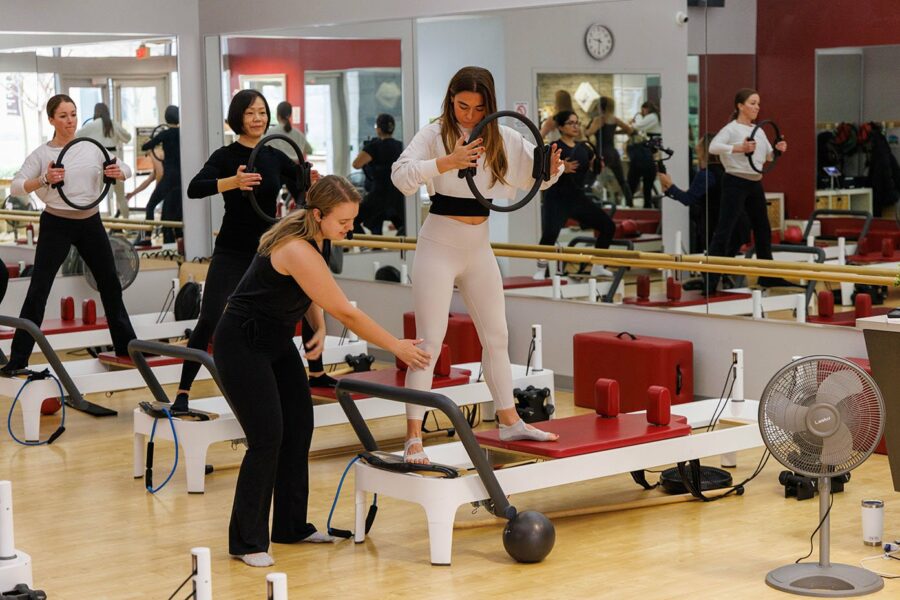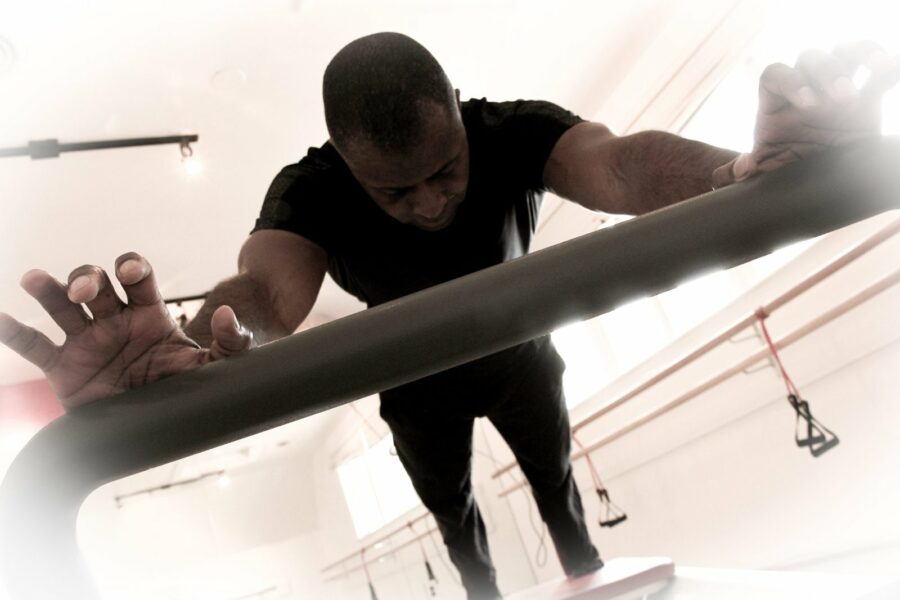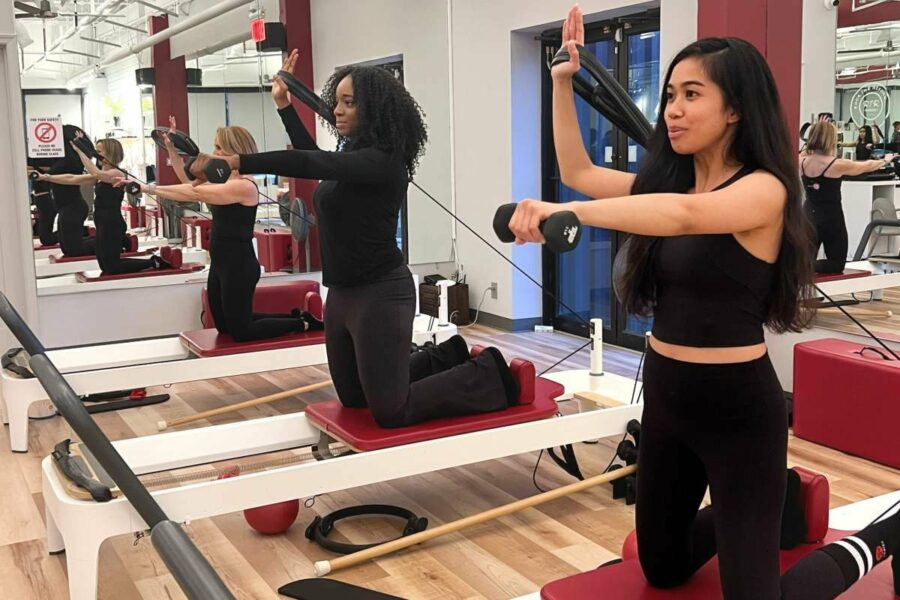 Whether you are new to working out or researching a new program, you may feel overwhelmed by all the exercise options out there. Should you take Pilates classes for beginners or start strength training instead?
Whether you are new to working out or researching a new program, you may feel overwhelmed by all the exercise options out there. Should you take Pilates classes for beginners or start strength training instead?
Both Pilates and strength training offer amazing health benefits, but which one is right for your needs and goals? This article will compare the two approaches to help you can make an informed decision.
The Benefits of Taking Pilates Classes for Beginners
Pilates is an excellent option if you haven’t worked out before. Pilates classes for beginners start slowly, ensuring you first master proper form and technique; as you become stronger, the difficulty increases. Some key advantages of Pilates include:
Improved Flexibility and Mobility
Pilates emphasizes lengthening your muscles as you contract them. Over time, this makes your body more flexible, agile, and mobile. You’ll notice everyday activities such as bending over to pick up something or looking over your shoulder to see behind you become easier.
Pilates classes for beginners often spend extra time warming up the body to increase overall flexibility.
Strengthened Core Muscles
Your core refers to the muscles of your abdomen, pelvis, lower back, and hips. Pilates focuses on this area, working to stabilize and support your trunk and spine. As you progress to more challenging moves, you will feel your core getting stronger. A strong core means you’ll have improved balance, posture, and coordination, helping you move more gracefully and easily in your day-to-day life.
Enhanced Posture and Alignment
Along with building core strength, Pilates focuses a great deal on body awareness. In each pose or movement, you’ll learn how to properly align various body parts.
Over time, this engrains healthy postural habits that you will maintain even when you’re not exercising. Standing up straight with shoulders back becomes natural.
Rehabilitation of Injuries
The controlled movements of Pilates are ideal if you are rehabbing an injury. The exercises gently strengthen muscles around the injured area to aid healing. Pilates classes for beginners start very slow and simple until you’ve regained mobility and stability. Check with your doctor first to modify moves if needed.
The Benefits of a Strength Training Routine
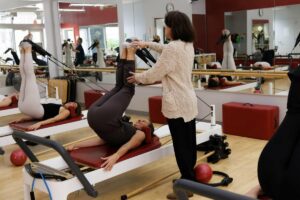 If your main goal is to gain muscle, trim fat, and see major body composition changes, strength training is likely the better fit. Here’s what you can expect from picking up some weights:
If your main goal is to gain muscle, trim fat, and see major body composition changes, strength training is likely the better fit. Here’s what you can expect from picking up some weights:
Builds Muscle Mass
The resistance provided by weights stresses your muscles causing them to adapt and get bigger over time. This will give tone and definition first, then larger visible muscles if you continue increasing the challenges. Mixing up your strength training workouts prevents boredom while shocking your muscles in new ways.
Strengthens Bones
Strength training exercises can increase bone density, which is especially important in reducing the risk of osteoporosis setting in later in life. Compound moves such as squats which support your own body weight are particularly helpful for building strong bones.
Burns Calories and Boosts Metabolism
Lifting weights burns calories both during your actual workout and afterward as a result of the energy your muscles need to recover and rebuild. The more toned your muscles become, the higher your resting metabolism is.
The Main Differences Between Strength Training and Pilates
Now that you know the general benefits of Pilates and strength training, let’s compare some key differences between the two exercise forms:
Goal of the Workout
The goal of Pilates is to create a lean, long, and flexible body. You’ll gain some strength and tone, but you won’t build large, bulky muscles. Conversely, with strength training, the goal is to maximize muscle growth through resistance. Gaining strength, size, and definition is the main objective.
Type of Exercises
Pilates relies on bodyweight moves, flexibility exercises, and specialized equipment such as reformers and resistance bands. The focus is quality over quantity by slowly and smoothly controlling each small motion.
Strength training utilizes free weights, resistance machines, bands, sandbags, and even your own body mass. The moves are bigger, more dynamic motions targeting specific muscle groups.
Muscles Targeted
In Pilates, you’ll work all the major muscle groups in one session, focusing heavily on core strength training. With strength training, you likely split that total body workout into separate targeted sessions such as “leg day” and “chest day” to better isolate muscle groups.
Equipment Used
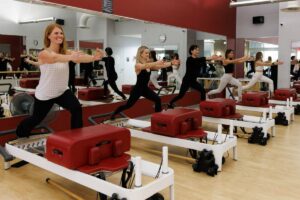 While Pilates equipment can build strength, it does not create the resistance for substantial muscle gains. For that, you need barbells, dumbbells, weighted machines, and other gym gear to provide challenging resistance.
While Pilates equipment can build strength, it does not create the resistance for substantial muscle gains. For that, you need barbells, dumbbells, weighted machines, and other gym gear to provide challenging resistance.
Intensity Level
Pilates classes for beginners are low impact, allowing you to work at your own pace. Pilates emphasizes control, even in the rigorous advanced level classes, while strength training values exertion and pushing past your limits.
Get Started on Your Fitness Journey with RTR Pilates
Both Pilates and strength training provide amazing benefits – it comes down to aligning your choice with your personal health and fitness goals.
Those recovering from injury or new to working out may prefer the controlled approach of Pilates. Seasoned exercisers wanting to gain muscle mass will see better results from strength training. Many people also choose to do both Pilates and strength training for a well-balanced approach.
If you’re interested in trying out Pilates as a beginner, RTR Pilates offers an amazing introductory membership with a class a day for 30 days and access to any of our locations.
Start with a Level 1 class to properly ease into the practice, and try out our different teachers to find the perfect fit for you. Contact RTR Pilates today to take advantage of this great opportunity.

